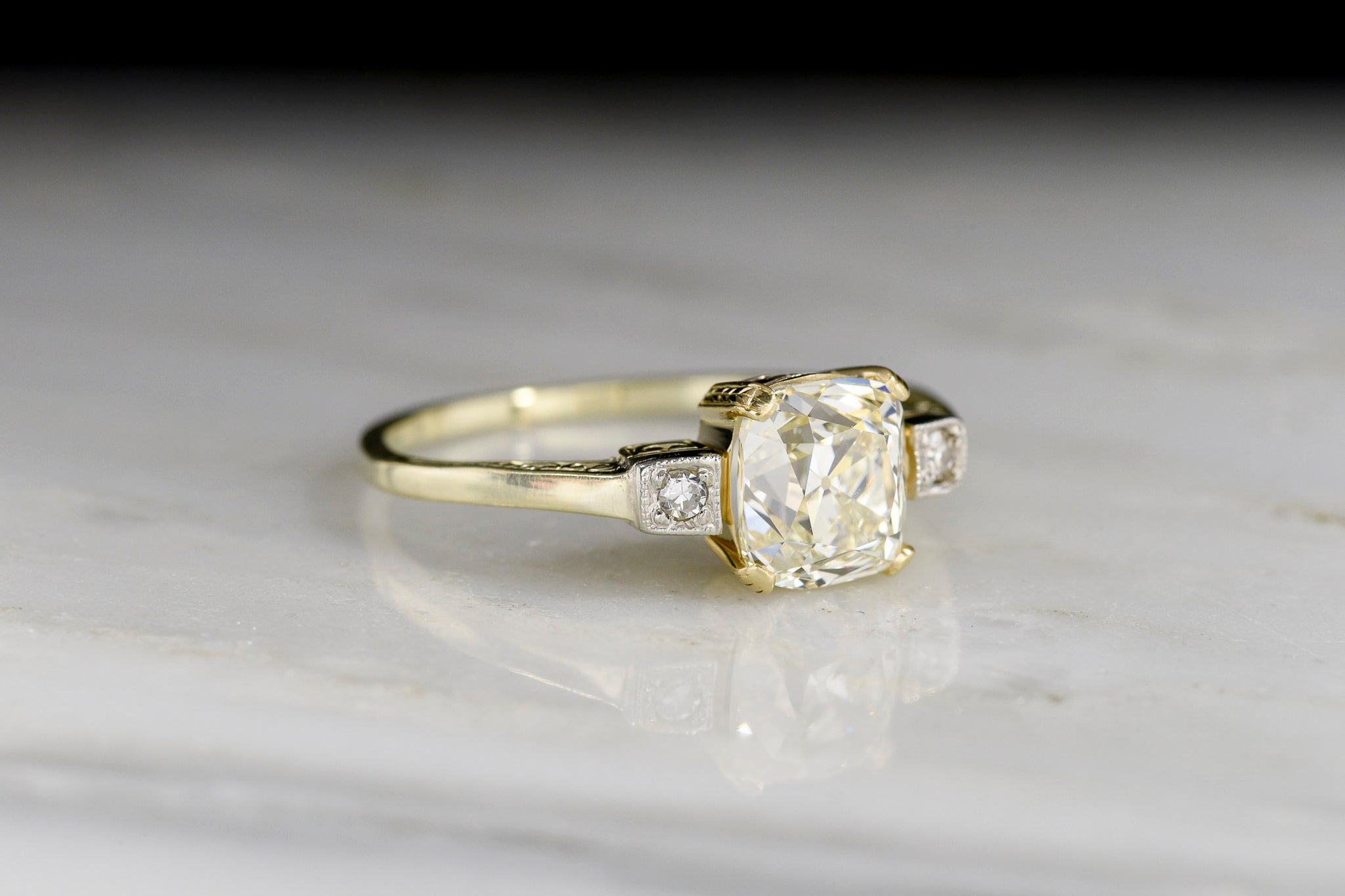Many of us choose med spas in an attempt to make us look younger and more attractive. One way to accomplish this is through skin rejuvenation treatments, which promise to make our skin look as new and fresh as a baby’s bum-bum. Chemical peels and mud treatments are among the most common – and the most popular – of these types of treatments. But few of us really know much about them, except for the cost and how long we’ll be expected to lie down with our eyes shut and/or our mouths closed. What exactly is the science behind them?
All About Chemical Peels
Some phenol peels are so powerful they can remove freckles.
A chemical peel, aka chemexfoliation or derma-peeling, is exactly what the name implies: chemicals are put on the skin to make its outer layer peel off, or shed, thus revealing fresher, new skin underneath. The thought behind this treatment is that age, the sun, stress, genetics and the environment, not to mention a host of other factors, combine together to wreak havoc on our skin, which is most evident in its outermost layer. So why not just peel it away?
Peeling the top layer of our skin away can make us look younger, more refreshed and more rejuvenated – even though the thought is more than a bit revolting. Having one done is not all fun and games, and all peels all carry some risk as well. They should only be carried out by a qualified plastic surgeon, not by some untrained med spa employee or a lab geek wielding a beaker of chemicals. While most peels are performed on the face, they can also be done on the neck and hands.
You will also need to follow all aftercare instructions very carefully, including staying out of the sun for quite a while afterwards, applying good quality sun cream on your face, avoiding the application of specific cosmetics and creams etc. Be aware also that after-effects are common with many peels, such as redness, stinging and flaking, but they should subside in time.
Types of Chemical Peels
Three main types of chemical peels exist, including…
* LIGHT PEEL: Alphahydroxy Acid (AHA) Peels.AHAs are naturally occurring acids and, bizarrely, they are found in such substances as tomato juice and sour milk. Basically, they irritate the skin to such a degree that the skin begins to peel off. Although a AHA peel is considered the lightest of all peels, for some reason it often causes the largest number of side-effects, including redness and stinging, especially ones that contain beta hydroxy acid (BHA). It might be a good idea to treat a small patch of skin first and wait a few days to see how you react. AHA peels are the mildest and lightest type of peel for people who either have less severe skin problems or less time to have a more invasive peel (and people who are scared of anything more stronger). Types of acids used are not as strong as in other peels, and include gycolic, lactic and even fruit peels. Good to smooth rough skin, gets rid of dryness, acne and minor wrinkles.
* MEDIUM PEEL: Trichloroacetic Acid (TCA) Peels. For medium depth peeling. The results last for a shorter period of time and are a lot less dramatic than with a phenol peel. The concentration of the actual chemical used ranges from 20 to 50 percent depending on what the practitioner decides is best for your skin. The chemical then penetrate all the way to the reticular dermis, made up of loose connective tissue. Better for people with darker skin, a TCA peel can correct blemishes, skin pigmentation problems and minor wrinkles.
* DEEPEST PEEL: Phenol Peels. Strongest of all, good for patients who have suffered maximum skin damage or who have pre-cancerous growths on their faces. The beauty part is that an improvement can be seen after just one treatment, and it can last for up to two decades. Amazing! Uses carbolic acid to penetrate as deep as is safely possible into the skin, getting rid of deeper wrinkles and helping areas of the face that are sun-damaged or have skin pigmentation problems look better. Interestingly, this peel is so strong it will also remove freckles – keep this in mind if you have a freckled body – might look funny to have a plain face! Also, keep in mind that after the initial redness resulting form this peel subsides that your face will look whiter – not great if you have naturally dark skin (unless you want to be a Michael Jackson lookalike, that is!)
People have chemical peels for a variety of reasons. They can get rid of:
* Age spots
* Blemishes
* Uneven skin pigmentation
* Dull complexion
* The appearance of wrinkles
* Acne scars
* Pre-cancerous growths
Be aware that chemical peels cannot work miracles, such as removing wrinkles completely, or getting rid of deep sags or bulges in the face. For that you would need to have laser resurfacing or plastic surgery.
Magical Mud
In the bad old days of the Soviet Empire, women relied on beauty basics to keep themselves looking great. Public bath-houses were often full of women scrubbing and rubbing themselves clean not with expensive French beauty products, but with jars of old coffee grounds, pots of honey and cartons of yogurt or curdled milk. They exfoliated, softened and smoothed with these all-natural products, which cost next to nothing, and never felt better.
Now Western women are visiting med spas to recreate these exfoliating and softening experiences not with household groceries but with magical mud – to not only make their skin soft and smooth but also to relieve stress, aches and pains, and even some painful medical conditions. Pelotherapy, or using natural mud or clay for therapeutic purposes, has been around for thousands of years, involving anything from applying a mud mask to slathering yourself in mid from head to toe.
Mud is a much less invasive way to make your skin look better compared to a chemical peel, through either facial mud packs or complete body immersion, and is often used a treatment for both younger and older women who simply want softer skin. Mud itself largely consists of clay, minerals and water, and the thought is that together they are seen as a gift from the earth when used expressly for rejuvenation and health purposes. The mud is often mixed with essential oils and slightly heated before application, and the majority of people enjoy the sensation.
Mud works on our skin because when it is mixed with moisture, it has the capacity to draw out impurities, thus helping us to cleanse, purify and refresh. It can also draw substances inside its own molecular structure and hold them there, thus trapping toxins within it. Composed of chemical compounds which are naturally rich in aluminum and silica, it also may contain other trace minerals such as zinc, copper and magnesium.
There are four main types of mud used in med spas today:
* Moor mud. Thought to contain over 1,000 natural chemicals, minerals, vitamins and even natural antibiotics, it is the most popular mud used on spa treatments today.
* Volcanic mud. Mixture of volcanic ash and water, with a high concentration of essential trace elements which are thought to be beneficial in drawing out impurities and controlling excess oil, Can also make pores smaller.
* Thermal spring mud. Purported to have specific medicinal properties. Sometimes referred to as “fango” although technically this only applies to mud found at the thermal springs in Battaglia, Italy.
* Ocean mud. Taken from the bottom of the ocean floor.
Mud for Medicinal Reasons
Because of its high mineral content, mud has also been used for centuries as a medicinal treatment. It is thought that the mineral content successfully seeps through the skin, enters the bloodstream and thus circulates freely around the body – and also stimulates the nerve endings in our skin to influence the entire nervous system. Proponents say it can cure or relieve a variety of ailments, although skeptics are more than skeptical. They include:
* Arthritis
* Rheumatism
* Joint Pain
* Fibromyalgia
* Muscular atrophy
* Post-surgical complaints
For thousands of years the human race has made the most of natural ingredients to cure our ills, and to make us look better while we’re at it. Mud therapy and chemical peels are no exception: they are simply a modern-day form of pampering the way nature intended.
If you are interested in trying either, you might want to try a mud bath first – although the results may not be as dramatic, it sounds like it would be a lot more fun – and a lot less painful.






More Stories
What Is an Aesthetic Doctor?
Hyaluronate In Face Cream Preparations For Smoothening Forehead Wrinkles
Trying a Massage Chair in the Mall